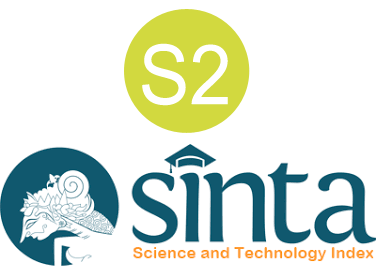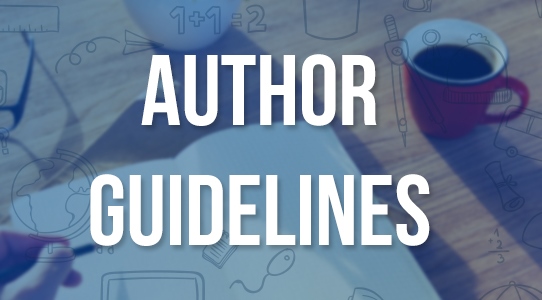Diffusion of Assistive Technology Innovations to Support Inclusive Academic Communication in Higher Education: A Case Study at Universitas PGRI Argopuro Jember
DOI:
https://doi.org/10.37680/qalamuna.v17i2.7848Keywords:
Academic Communication; Assistive Technology; Higher Education; Inclusive Education; Innovation DiffusionAbstract
This study explores the diffusion of Assistive Technology (AT) innovations in fostering inclusive academic communication for students with disabilities at Universitas PGRI Argopuro Jember. Employing a qualitative case study design, data were collected through in-depth interviews, participatory observations, and document analysis. The findings demonstrate that AT, such as screen readers (JAWS, NVDA, TalkBack) and locally developed applications (SPETRI-DOC MY EARS, PIVE-MY EYES, CEMA, and SPETRIC-Forum Sahabat Tuli), significantly enhance accessibility, independence, and participation among students with visual, hearing, and physical impairments. Guided by Rogers’ Diffusion of Innovations theory, the adoption process was found to follow the stages of innovators, early adopters, early majority, late majority, and laggards. Critical success factors include institutional policy support, educator competencies, student volunteers as mediators, and the contextual relevance of locally tailored applications. Nevertheless, challenges remain, particularly limited funding, insufficient training, and technical accuracy issues in speech-to-text applications. Overall, the study highlights that successful AT diffusion is determined not solely by technological availability but also by the readiness of institutional ecosystems, inclusive campus culture, and sustainable adaptive policies that collectively promote equity in higher education.
Downloads
References
Alonso, A. D., Vu, O. T. K., Tran, T. D., Nguyen, T. T., Dang, Q. T., & Maheshwari, G. (2024). Perceived advantages and disadvantages of information communication technology adoption among restaurants in an emerging economy: A diffusion of innovations view. International Journal of Hospitality Management, 122, 103837. https://doi.org/10.1016/j.ijhm.2024.103837
Arifin, M., Rahman, A., & Karsidi, R. (2024). Dampak Pengembangan Teknologi Asistif terhadap Layanan Pendidikan Berbasis IPTEK bagi Individu Tunanetra. JST (Jurnal Sains Dan Teknologi), 13(1), 33–40. https://doi.org/10.23887/jstundiksha.v13i1.73684
Arriani, F., Agustiyawati, Rizki, A., Widiyanti, R., Wibowo, S., Tulalessy, C., Herawati, F., & Maryanti, T. (2022). Panduan Pelaksanaan Pendidikan Inklusif. Badan Standar, Kurikulum, Dan Asesmen Pendidikan Kementerian Pendidikan, Kebudayaan, Riset, Dan Teknologi Republik Indonesia.
Boucher, P. (2018). Assistive technologies for people with disabilities. European Parliamentary Research Service Scientific Foresight Unit (STOA).
Creswell, J. W., & Creswell, J. D. (2018). Research Design: Qualitative, Quantitative, and Mixed Methods Approaches. SAGE Publications, Inc.
Esquivel, P., McGarvey, L., Phelan, S., & Adams, K. (2024). Exploring environmental factors affecting assistive technology strategies in mathematics learning for students with physical disabilities. Disability and Rehabilitation: Assistive Technology, 19(1), 66–77. https://doi.org/10.1080/17483107.2022.2062465
Evmenova, A. (2020). Implementation of Assistive Technology in Inclusive Classrooms. In Assistive Technology to Support Inclusive Education (pp. 177–193). Emerald Publishing Limited. https://doi.org/10.1108/S1479-363620200000014014
Fernández-Batanero, J. M., Montenegro-Rueda, M., & Fernández-Cerero, J. (2022). Access and Participation of Students with Disabilities: The Challenge for Higher Education. International Journal of Environmental Research and Public Health, 19(19), 11918. https://doi.org/10.3390/ijerph191911918
Fernández-Batanero, J. M., Montenegro-Rueda, M., Fernández-Cerero, J., & García-Martínez, I. (2022). Assistive technology for the inclusion of students with disabilities: a systematic review. Educational Technology Research and Development, 70(1), 1–20.
Iannone, A., & Giansanti, D. (2023). Breaking Barriers—The Intersection of AI and Assistive Technology in Autism Care: A Narrative Review. Journal of Personalized Medicine, 14(1), 41. https://doi.org/10.3390/jpm14010041
Karki, J., Rushton, S., Bhattarai, S., & De Witte, L. (2023). Access to assistive technology for persons with disabilities: a critical review from Nepal, India, and Bangladesh. Disability and Rehabilitation: Assistive Technology, 18(1), 8–16. https://doi.org/10.1080/17483107.2021.1892843
Kaushalya, K. W. A. H. H., Thayaparan, M., Weerasinghe, L. N. K., & Attfield, A. (2024). Rogers’ diffusion of innovation theory to enhance BIM implementation in the construction industry of Sri Lanka. Intelligent Buildings International, 16(4), 182–198. https://doi.org/10.1080/17508975.2024.2430217
Kunka, A., & Wahome, N. (2021). The Role of Assistive Technology in the Education of Children with Special Needs: Teachers’ Perspectives. Unpublished Master’s Thesis. Linköping University.
Lien, V. (2025). Decolonising Special Educational Needs and Disabilities (SEND): A Systems Theoretical Framework for Global Inclusivity. Systems Research and Behavioral Science, 42(2), 517–530. https://doi.org/10.1002/sres.3138
Lubna, L., Sulhan, A., Aziz, A., Astuti, F. H., Hadi, Y. A., Rizka, M. A., & Sarilah. (2021). Pendidikan Inklusi. Sanabil.
Mahmoudi-Dehaki, M., Nasr-Esfahani, N., & Vasan, S. (2025). The Transformative Role of Assistive Technology in Enhancing Quality of Life for Individuals With Disabilities. SSRN Electronic Journal, 3(3), 45–72. https://doi.org/10.4018/979-8-3693-6308-9.ch003
Mateos-Sánchez, M., Melo, A. C., Blanco, L. S., & García, A. M. F. (2022). Chatbot as an Educational and Inclusive Tool for People with Intellectual Disabilities. Sustainability, 14(3), 1520. https://doi.org/10.3390/su14031520
McNicholl, A., Casey, H., Desmond, D., & Gallagher, P. (2021). The impact of assistive technology use for students with disabilities in higher education: a systematic review. Disability and Rehabilitation: Assistive Technology, 16(2), 130–143.
Menzli, L. J., Smirani, L. K., Boulahia, J. A., & Hadjouni, M. (2022). Investigating open educational resources adoption in higher education using Rogers’ diffusion of innovation theory. Heliyon, 8(7), 1–12. https://doi.org/10.1016/j.heliyon.2022.e09885
Miles, M. B., & Huberman, A. M. (2014). Qualitative Data Analysis. UI Press.
Monden, K. R., Charlifue, S., Philippus, A., Kilbane, M., Muston-Firsch, E., MacIntyre, B., Welch, A., Baldessari, J., Coker, J., & Morse, L. R. (2024). Exploring perspectives on assistive technology use: barriers, facilitators, and access. Disability and Rehabilitation: Assistive Technology, 19(4), 1676–1686. https://doi.org/10.1080/17483107.2023.2227235
Moriña, A. (2024). When what is unseen does not exist: disclosure, barriers and supports for students with invisible disabilities in higher education. Disability & Society, 39(4), 914–932. https://doi.org/10.1080/09687599.2022.2113038
Pappadà, A., Chattat, R., Chirico, I., Valente, M., & Ottoboni, G. (2021). Assistive Technologies in Dementia Care: An Updated Analysis of the Literature. Frontiers in Psychology, 12. https://doi.org/10.3389/fpsyg.2021.644587
Patnaik, P., & Bakkar, M. (2024). Exploring determinants influencing artificial intelligence adoption, with reference to the diffusion of innovation theory. Technology in Society, 79, 102750. https://doi.org/10.1016/j.techsoc.2024.102750
Phytanza, D. T. P., Nur, R. A., Hasyim, Mappaompo, A., Rahmi, S., Oualeng, A., Silaban, P. S. M., Suyuti, Iswati, & Rukmini, B. S. (2023). PENDIDIKAN INKLUSIF: KONSEP, IMPLEMENTASI, DAN TUJUAN. Rey Media Grafika.
Puspitosari, W. A., Satria, F. E., Surwati, A., & Iswanto. (2022). Tantangan Mewujudkan Kampus Inklusi di Pendidikan Tinggi dalam Telaah Literatur. Jurnal Moral Kemasyarakatan, 7(1), 55–67.
Raman, R., Mandal, S., Das, P., Kaur, T., Sanjanasri, J. P., & Nedungadi, P. (2024). Exploring University Students’ Adoption of ChatGPT Using the Diffusion of Innovation Theory and Sentiment Analysis With Gender Dimension. Human Behavior and Emerging Technologies, 2024(1). https://doi.org/10.1155/2024/3085910
Rasouli, O., Kvam, L., Husby, V. S., Røstad, M., & Witsø, A. E. (2023). Understanding the possibilities and limitations of assistive technology in health and welfare services for people with intellectual disabilities from staff perspectives. Disability and Rehabilitation: Assistive Technology, 18(7), 989–997. https://doi.org/10.1080/17483107.2021.1963856
Rogers, E. M. (2002). Diffusion of preventive innovations. Addictive Behaviors, 27(6), 989–993. https://doi.org/10.1016/S0306-4603(02)00300-3
Rogers, E. M., Singhal, A., & Quinlan, M. M. (2019). Diffusion of Innovations 1. In An Integrated Approach to Communication Theory and Research (pp. 415–434). Routledge. https://doi.org/10.4324/9780203710753-35
Sahin, I. (2006). DETAILED REVIEW OF ROGERS’ DIFFUSION OF INNOVATIONS THEORY AND EDUCATIONAL TECHNOLOGY-RELATED STUDIES BASED ON ROGERS’ THEORY. The Turkish Online Journal of Educational Technology, 5(2), 1–10.
Shpigelman, C.-N., Mor, S., Sachs, D., & Schreuer, N. (2022). Supporting the development of students with disabilities in higher education: access, stigma, identity, and power. Studies in Higher Education, 47(9), 1776–1791. https://doi.org/10.1080/03075079.2021.1960303
Smith, E. M., Huff, S., Wescott, H., Daniel, R., Ebuenyi, I. D., O’Donnell, J., Maalim, M., Zhang, W., Khasnabis, C., & MacLachlan, M. (2024). Assistive technologies are central to the realization of the Convention on the Rights of Persons with Disabilities. Disability and Rehabilitation: Assistive Technology, 19(2), 486–491. https://doi.org/10.1080/17483107.2022.2099987
Svensson, I., Nordström, T., Lindeblad, E., Gustafson, S., Björn, M., Sand, C., Almgren/Bäck, G., & Nilsson, S. (2021). Effects of assistive technology for students with reading and writing disabilities. Disability and Rehabilitation: Assistive Technology, 16(2), 196–208. https://doi.org/10.1080/17483107.2019.1646821
Tarantino, G., Makopoulou, K., & Neville, R. D. (2022). Inclusion of children with special educational needs and disabilities in physical education: A systematic review and meta-analysis of teachers’ attitudes. Educational Research Review, 36, 100456. https://doi.org/10.1016/j.edurev.2022.100456
Turan, A., Tunç, A. Ö., & Zehir, C. (2015). A Theoretical Model Proposal: Personal Innovativeness and User Involvement as Antecedents of Unified Theory of Acceptance and Use of Technology. Elsevier: Procedia - Social and Behavioral Sciences, 210, 43–51.
UNICEF. (2022). The Use of Assistive Technology in Education: A Guide for Teachers and Schools. United Nations Children’s Fund (UNICEF) Regional Office for Europe and Central Asia.
Vincent, D. A., Okeowo, R. O., & Ariyo, S. (2024). The Use of Assistive Technology for Students With Disabilities in Technical Colleges in Ondo State. Journal of Educational Research and Practice, 14, 52–67.
Viner, M., Singh, A., & Shaughnessy, M. F. (2022). Assistive Technology to Help Students With Disabilities: Research Anthology on Inclusive Practices for Educators and Administrators in Special Education. Special Education Design and Development Tools for School Rehabilitation Professionals, 240–267.
WIPO. (2021). Assistive Technology. World Intellectual Property Organization.
Wynne, R., McAnaney, D., MacKeogh, T., Stapleton, P., Delaney, S., Dowling, N., & Jeffares, I. (2016). Assistive Technology/Equipment in Supporting the Education of Children with Special Educational Needs – What Works Best? National Council for Special Education, 22.
Zhao, X., Cox, A., & Chen, X. (2025). The use of generative AI by students with disabilities in higher education. The Internet and Higher Education, 66, 101014. https://doi.org/10.1016/j.iheduc.2025.101014
Downloads
Published
How to Cite
Issue
Section
License
Copyright (c) 2025 Asrorul Mais, Lailil Aflahkul Yaum

This work is licensed under a Creative Commons Attribution-ShareAlike 4.0 International License.
Authors who submit manuscript retain its copyright and grant publisher right of first publication licensed under a Creative Commons Attribution-ShareAlike 4.0 International License (CC BY-SA 4.0) that allows others to access (search, read, download, and cite), share (copy and redistribute the material in any medium or format) and adapt (remix, transform, and build upon any material) the work for any lawful purpose, even commercially with an acknowledgement of the work's authorship and initial publication in Qalamuna: Jurnal Pendidikan, Sosial, dan Agama.












